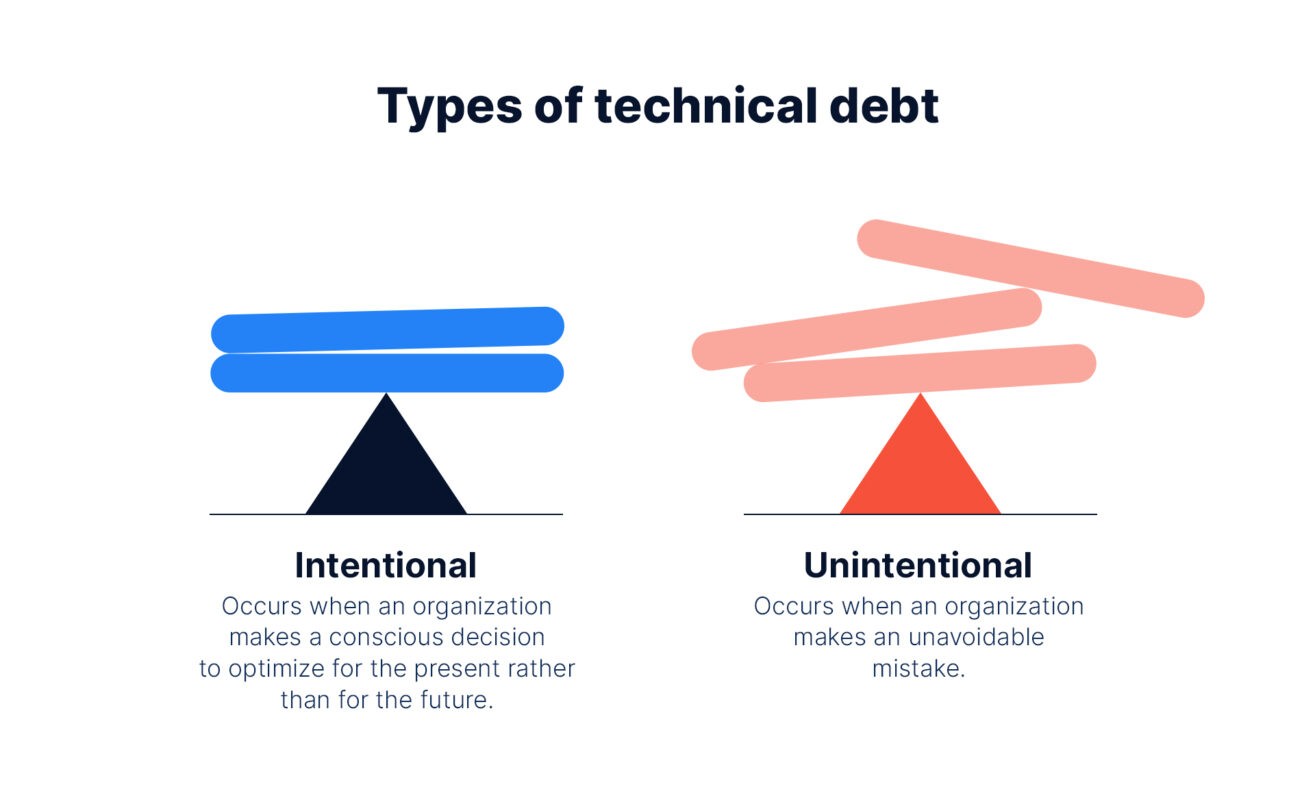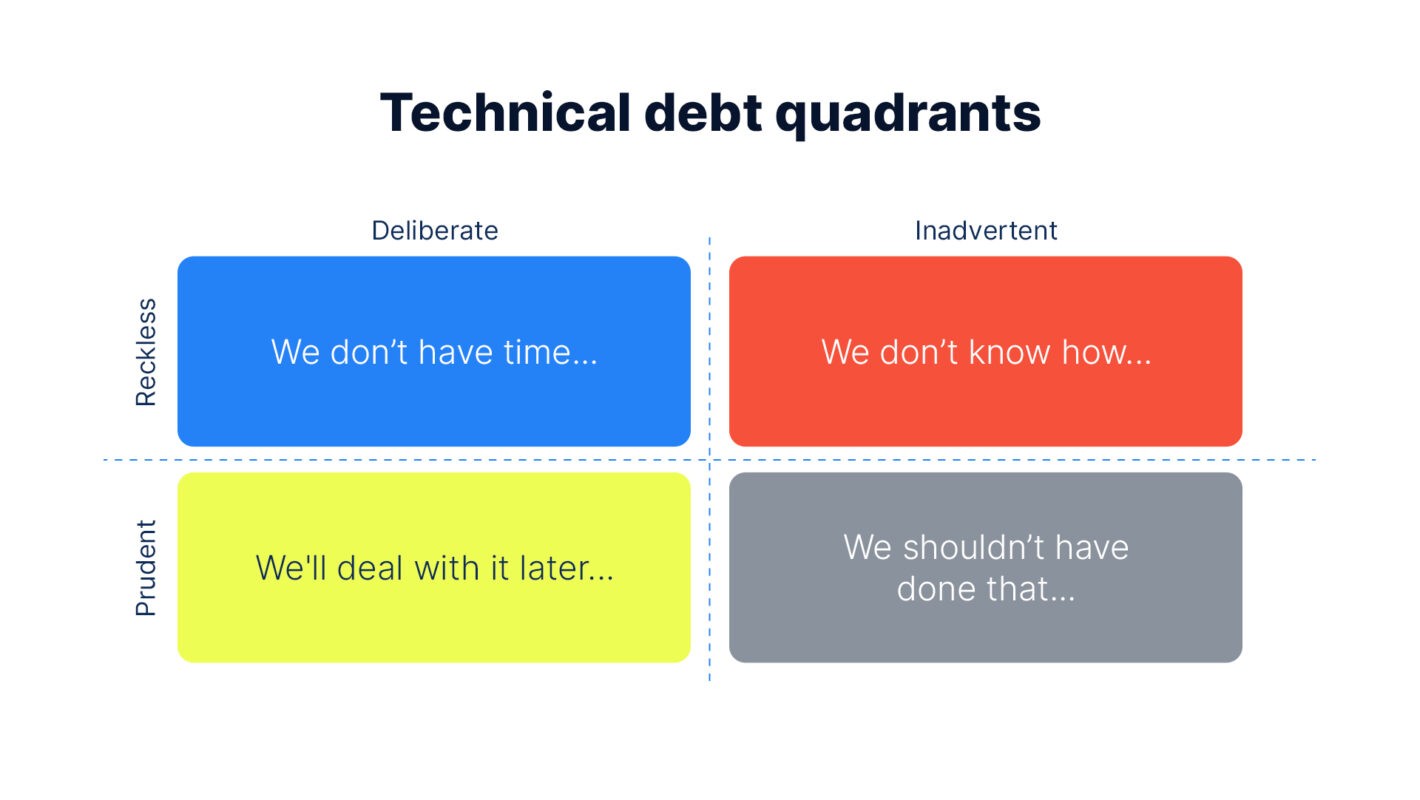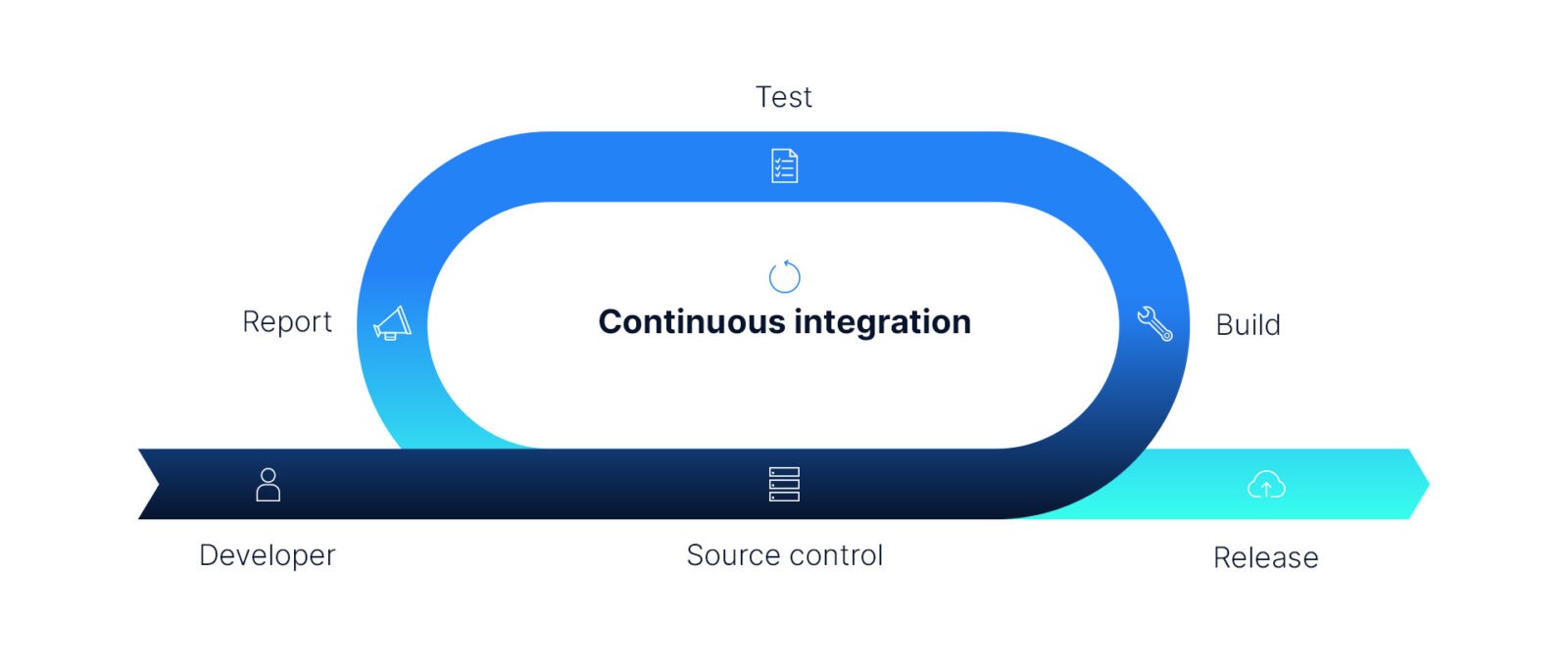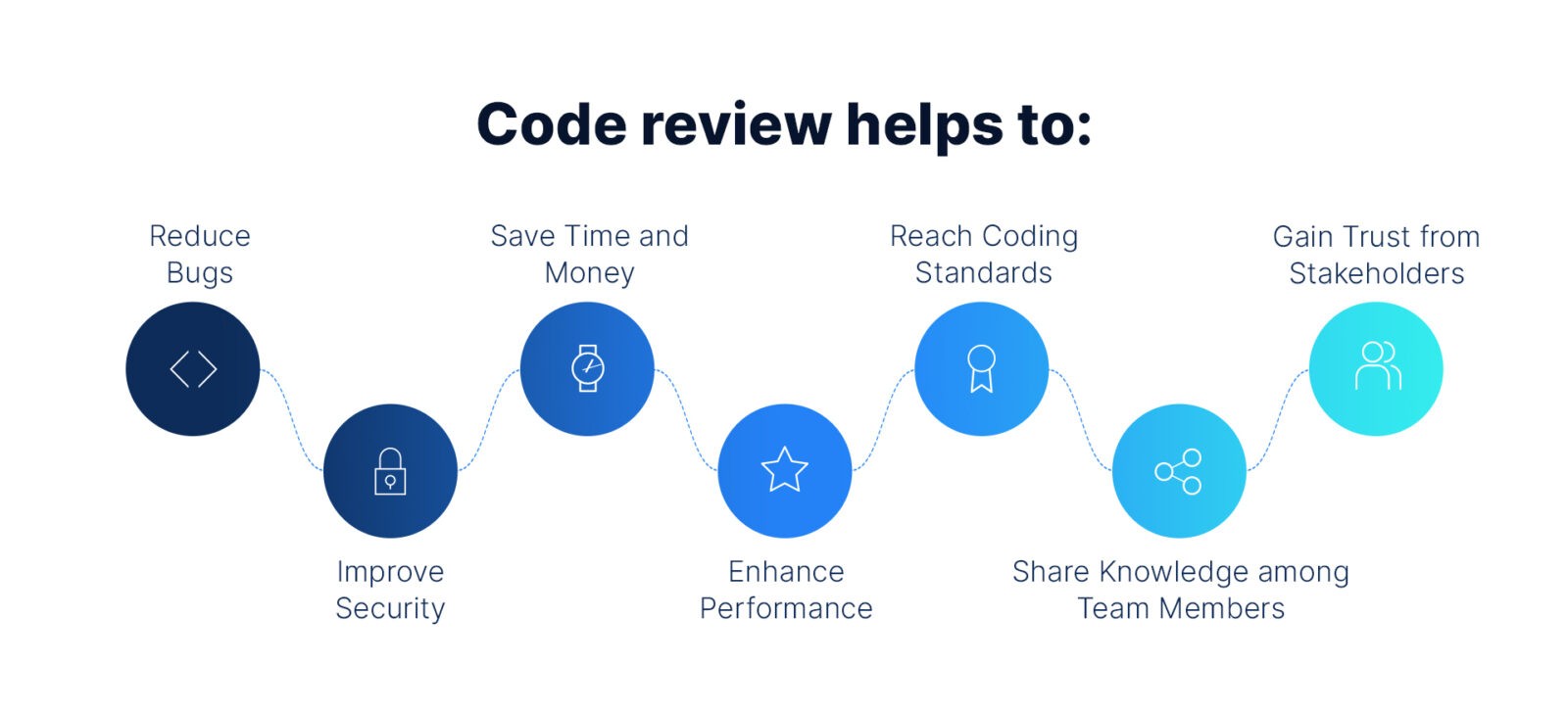
January 03, 2024
Technical Debt Management Strategies
Managing technical debt is a critical aspect of software development. From our experience at Artkai, we know that technical debt is an inevitable part of the development process. Therefore, it is essential to manage it effectively to ensure that it does not impede the development of high-quality software products.
In this article, we will discuss various technical debt management strategies that can help you to handle your technical debt efficiently and effectively.
Understanding Technical Debt
Before we delve into technical debt management strategies, let's first understand what technical debt is. Technical debt refers to the cost of maintaining a software system that is not ideal. This cost is incurred when a developer chooses an expedient solution over a more optimal one. This approach may lead to creating code that is less maintainable, less scalable, and less flexible.

Definition of Technical Debt
Technical debt is a metaphor that describes the trade-off between the short-term benefits of rapid software development and the long-term costs of maintaining a software system that is not ideal. When a developer chooses an expedient solution over a more optimal one, technical debt is incurred. This approach may lead to creating code that is less maintainable, less scalable, and less flexible.
Technical debt can be thought of as a loan that must be paid back with interest. The longer technical debt is left unpaid, the more it will cost in terms of time, effort, and resources to fix.
Causes of Technical Debt
There are several reasons why technical debt occurs in software development. It could be due to tight project timelines, lack of resources, limited budget, lack of expertise of team members, and changes in requirements. In some cases, technical debt may be incurred intentionally, as a way to deliver a product to market more quickly.

However, in most cases, technical debt is incurred unintentionally, as a result of poor planning, lack of communication, or a failure to prioritize long-term goals over short-term gains.
Impacts of Technical Debt on Software Development
The impact of technical debt on software development can be significant. It can lead to slower delivery of features, lower quality code, loss of productivity, and difficulty in maintaining the software system over time. Technical debt can also lead to higher costs, as it requires more time and effort to fix problems that could have been avoided in the first place.
Furthermore, technical debt can have a negative impact on team morale and motivation. Developers may become frustrated with having to work with poorly written code, and may feel demotivated by the prospect of having to spend time fixing problems that could have been avoided.
Overall, it is important to manage technical debt proactively, in order to avoid these negative impacts and ensure the long-term success of a software system.
Identifying Technical Debt
Identifying technical debt is crucial to managing it effectively. Technical debt is a metaphorical term used to describe the cost of maintaining a codebase that is not up to standard. It is a common problem in software development, where developers have to make trade-offs between writing high-quality code and delivering features on time.
There are several tools and techniques that can help you identify technical debt in your codebase. By identifying technical debt early on, you can take steps to reduce it and prevent it from becoming a bigger problem down the line.
Code Analysis Tools
Code analysis tools such as Sonarqube, Code Climate, and PMD can identify issues in code that may lead to technical debt. These tools detect code smells, complexity, and duplication, which could indicate areas of the system that need improvement. Code smells are indicators of problems in the codebase that may lead to bugs or other issues. Complexity refers to code that is difficult to understand or maintain. Duplication refers to code that is repeated in multiple places, which can lead to inconsistencies and errors.
Using code analysis tools can help you identify technical debt early on and take steps to address it before it becomes a bigger problem. By regularly running code analysis tools, you can keep track of technical debt levels and ensure that steps are being taken to reduce them.
Code Review Practices
Code reviews are another effective way of identifying technical debt. Developers can review each other's code and identify areas that need improvement. Regular code reviews can help to ensure that high-quality code is being produced and technical debt is being kept under control.
During a code review, developers can look for code smells, complexity, and duplication. They can also check for adherence to coding standards and best practices. By identifying technical debt during a code review, developers can take steps to address it before it becomes a bigger problem.
Tracking Technical Debt in Project Management Tools
Tracking technical debt in project management tools such as JIRA or Trello can help developers keep track of technical debt levels and ensure that steps are being taken to reduce them. By creating tasks or issues for technical debt items, developers can prioritize them and ensure that they are addressed in a timely manner.
Project management tools can also be used to track technical debt trends over time. By monitoring technical debt levels and trends, developers can identify areas of the codebase that need more attention and take steps to reduce technical debt levels.
Preventing Technical Debt
Preventing technical debt is essential to reducing the cost of maintaining software over time. Here are some strategies that can help prevent technical debt from accumulating in the first place.
Implementing Coding Standards
Implementing coding standards can help ensure that code is produced to a consistent high quality across a team of developers. This approach includes using well-defined coding conventions, design patterns, and best practices. By implementing coding standards, developers can produce code that is easier to maintain and less prone to technical debt. It also helps ensure that new developers who join the team can quickly understand the codebase and contribute effectively.
For example, a coding standard could require that all functions have a clear and concise name that describes their purpose. This makes it easier for other developers to understand what the function does and how it fits into the overall codebase. Similarly, coding standards can require the use of comments to explain complex code or to document any workarounds or hacks that were required to get the code working. This helps prevent future developers from accidentally introducing new technical debt by not understanding the code's nuances.
Continuous Integration and Testing
Continuous integration and testing is the practice of continuously integrating code changes into a shared repository and ensuring that all tests pass before deploying into production. This approach can help prevent the accumulation of technical debt by ensuring that quality code is produced. By continuously integrating and testing code changes, developers can catch any issues early in the development process, before they become more difficult and expensive to fix.

Continuous integration and testing can also help prevent technical debt by encouraging developers to write automated tests. These tests can ensure that code changes do not break existing functionality and can help prevent regressions. By catching issues early, developers can prevent technical debt from accumulating and ensure that the software remains maintainable over time.
Regular Refactoring
Regular refactoring involves restructuring code that may have accumulated technical debt. It is done to simplify code, reduce complexity, and make it more maintainable over time. Refactoring can be done as part of regular maintenance or when new features are added to the software.
Refactoring can help prevent technical debt by ensuring that the codebase remains clean and maintainable. By regularly refactoring code, developers can prevent technical debt from accumulating and ensure that the software remains easy to maintain over time. Refactoring can also help improve the performance of the software by removing any unnecessary code or improving the efficiency of existing code.
Effective Documentation
Effective documentation is essential to prevent the accumulation of technical debt over time. Documentation helps developers understand how the code works and can help prevent them from introducing new technical debt. Documentation can also help new developers who join the team quickly understand the codebase and contribute effectively.
Documentation can take many forms, including comments in the code, README files, and technical documentation. Comments in the code can explain how specific sections of the code work or any workarounds or hacks that were required to get the code working. README files can provide an overview of the project and how to set it up, while technical documentation can provide a more detailed explanation of how the software works.
Effective documentation can help prevent technical debt by ensuring that developers understand the codebase and can make informed decisions when making changes. By understanding the codebase, developers can avoid introducing new technical debt and ensure that the software remains maintainable over time.
Prioritizing Technical Debt Reduction
Reducing technical debt should be a priority for software development teams. Technical debt is the accumulation of shortcuts, compromises, and trade-offs made during software development that may lead to higher costs, slower development, and increased risk in the future. The longer technical debt is left unaddressed, the more difficult and expensive it becomes to fix. Here are some strategies that can help prioritize the reduction of technical debt.
Assessing the Severity of Technical Debt
Assessing the severity of technical debt can help determine which areas of the codebase require improvement urgently. This approach involves evaluating the cost of fixing the technical debt against the cost of leaving it unaddressed. Technical debt can be classified into different categories based on its severity, such as critical, high, medium, and low. Critical technical debt can cause significant problems, such as system crashes or data loss. High technical debt can cause delays and increase the risk of errors. Medium and low technical debt can be addressed over time without causing significant problems. By prioritizing the most severe technical debt, development teams can reduce the risk of future problems and improve the overall quality of the codebase.
Balancing Feature Development and Debt Reduction
It is essential to strike a balance between developing new features and reducing technical debt. Developing new features may generate technical debt that needs to be managed effectively. On the other hand, reducing technical debt can slow down feature development. One approach to balancing feature development and debt reduction is to allocate a certain percentage of development time to technical debt reduction. For example, a team may allocate 20% of their development time to reducing technical debt. Another approach is to prioritize technical debt reduction after the completion of major feature development milestones.
Creating a Technical Debt Reduction Plan
A technical debt reduction plan can help the development team prioritize technical debt reduction. The plan should include a list of technical debt that needs to be addressed, the order in which it should be addressed, and the expected timeline for addressing each item. The plan should also include metrics for measuring progress, such as the number of technical debt items addressed per sprint or the reduction in technical debt over time. By creating a technical debt reduction plan, development teams can ensure that technical debt reduction is prioritized and progress is measured effectively.
Reducing technical debt is an ongoing process that requires commitment and discipline from the development team. By prioritizing technical debt reduction, balancing feature development and debt reduction, and creating a technical debt reduction plan, development teams can improve the quality of their codebase, reduce the risk of future problems, and increase the efficiency of their development process.
Strategies for Reducing Technical Debt
Reducing technical debt requires intentional effort and a systematic approach that is tailored to the specific needs of the software system. Technical debt can accumulate over time due to various factors such as tight deadlines, lack of resources, and changing requirements. This can lead to a complex and challenging system that is difficult to maintain and scale.
However, there are several strategies that can help in reducing technical debt and improving the overall quality of the software system. These strategies are discussed in detail below.
Refactoring Techniques
Refactoring is the process of restructuring code without changing its external behavior. This technique can help improve the maintainability and scalability of code. Refactoring involves identifying areas of the code that are difficult to maintain, and taking steps to simplify and improve them. This can include removing duplicate code, simplifying complex logic, and improving naming conventions.
By using refactoring techniques, teams can reduce technical debt and improve the overall quality of the codebase. Refactoring should be done regularly and integrated into the development process to ensure that technical debt does not accumulate over time.

Automated Testing and Code Coverage
Automated testing and code coverage are essential when managing technical debt. Automated tests ensure that code quality is maintained over time, and code coverage can help identify areas of the system that need more test coverage. Automated testing involves writing scripts that automatically test the software system. This can include unit tests, integration tests, and acceptance tests.
Code coverage is a metric that measures the percentage of code that is covered by automated tests. Teams should aim for high code coverage to ensure that the system is thoroughly tested and that technical debt is minimized. By using automated testing and code coverage, teams can ensure that code quality is maintained over time, and technical debt is reduced.
Addressing Architectural Debt
Addressing architectural debt is essential in managing technical debt. This approach involves identifying areas of the software system that are challenging to maintain and taking steps to simplify and restructure them. Architectural debt can accumulate due to various factors such as changing requirements, lack of resources, and poor design decisions.
To address architectural debt, teams should identify areas of the system that are challenging to maintain and take steps to simplify and restructure them. This can include breaking down large modules into smaller ones, simplifying complex logic, and improving the overall design of the system. By addressing architectural debt, teams can ensure that the system is maintainable and scalable over time.
Improving Team Collaboration and Communication
Improving team collaboration and communication is critical in managing technical debt. Technical debt can impact the entire team and can lead to delays, bugs, and poor code quality. Effective collaboration ensures that team members understand the impact of technical debt and work together to find solutions to manage it.
Teams should regularly communicate about technical debt and work together to find solutions to reduce it. This can include regular code reviews, pair programming, and knowledge sharing sessions. By improving team collaboration and communication, teams can ensure that technical debt is managed effectively and that the overall quality of the software system is improved.
Monitoring and Maintaining Low Technical Debt
After addressing technical debt, it is critical to maintain a low level of technical debt. Here are some strategies that can help to monitor and maintain low technical debt.
Establishing Key Performance Indicators (KPIs)
Establishing key performance indicators (KPIs) can help track progress in keeping technical debt low. KPIs could include tracking code quality metrics or measuring the time spent fixing technical debt.
Regularly Reviewing and Updating Code
Regularly reviewing and updating code is essential to maintaining low technical debt levels. This approach involves regularly assessing the code and taking steps to improve it.

Encouraging a Culture of Continuous Improvement
Encouraging a culture of continuous improvement is critical to maintaining low technical debt levels. This approach involves promoting the idea that software development is an ongoing process that requires constant improvement.
Conclusion
In conclusion, effective management of technical debt is vital to producing high-quality software products that meet the needs of clients. This article has explored various strategies for managing technical debt. By implementing these strategies, software development teams can effectively manage technical debt and prevent it from impeding the development of high-quality software.
Contact us today to learn more about how we can help you manage technical debt and build software products that exceed your expectations.
Clients and Results
Schedule your free consultation
Don't miss this opportunity to explore the best path for your product. We are ready to delve into the specifics of your project, providing you with expert insights and optimal solutions.
Book your free sessionRead More
Explore articles from Artkai - we have lots of stories to tell
Join us to do the best work of your life
Together we advance the human experience through design.